11 Iconic WWI and WWII Rifles Collectors Still Hunt For
Many of the rifles used during the World Wars have become prized possessions among collectors. These firearms represent a mix of military innovation, historical significance, and stories from the battlefield. Each one tells a story of craftsmanship and endurance during some of history’s most challenging times. Today, collectors continue to search for these rare pieces, valuing them for their heritage and character. If you love military history, these rifles offer a fascinating connection to the past worth exploring further.
This post may contain affiliate links, which helps keep this content free. Please read our disclosure for more info.
M1 Garand
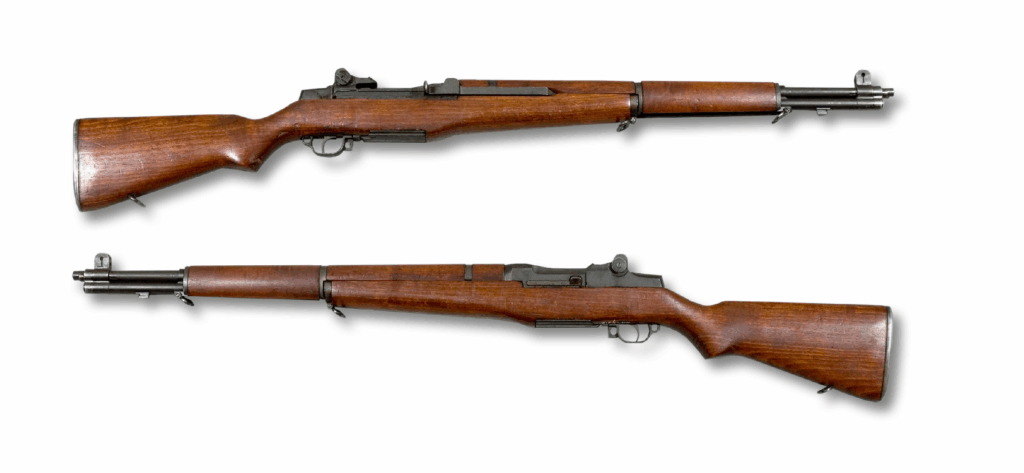
The M1 Garand entered service in 1936 and became the standard rifle of the U.S. Army during World War II. It was the first semi-automatic rifle widely used in combat, allowing American troops a firing advantage over bolt-action opponents. General George S. Patton famously called it the greatest battle implement ever devised, a quote that added to its fame. The rifle’s gas-operated system gave soldiers unmatched reliability and speed during firefights. Today, collectors pay anywhere from $1,200 to $3,000 for well-preserved models.
What makes the M1 Garand so iconic is its role in defining U.S. military firepower during the war. Its distinct ping sound when the clip ejected became a symbol of the American infantry. Enthusiasts value rifles with authentic wartime production markings from Springfield Armory or Winchester. Many restored versions are used in historical reenactments and competitions. Owning one represents both a piece of history and a milestone in firearm evolution.
Springfield M1903
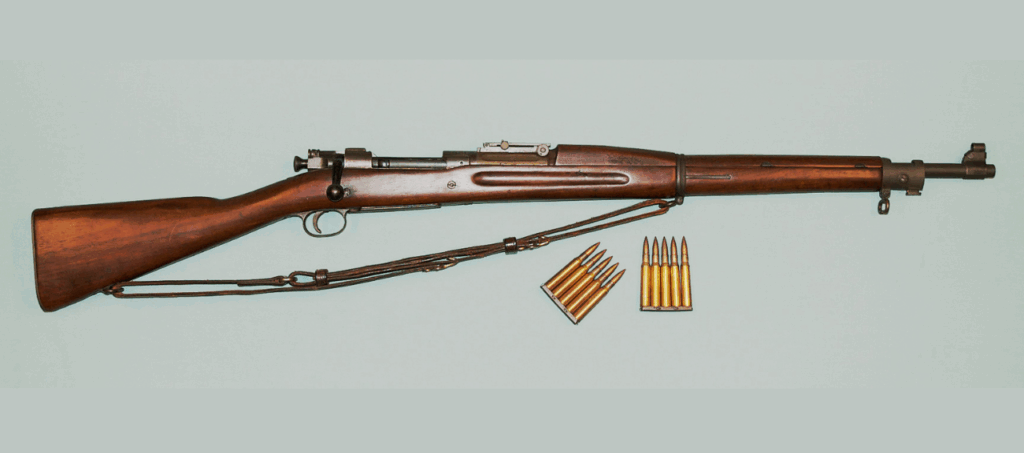
The Springfield M1903 entered U.S. military service in 1903 and saw extensive action in both world wars. Based on the Mauser action, it became known for its superior accuracy and dependability. The rifle was widely used by American marksmen and later modified into sniper variants. Collectors treasure this rifle for its precision engineering and wartime service history. Depending on model and condition, prices usually fall between $900 and $2,200.
Its long range and smooth operation made it a favorite among sharpshooters. The M1903A4 sniper version is particularly prized for its association with famous WWII campaigns. Many collectors focus on finding rifles with original barrels and unaltered stocks, as these command higher values. The Springfield M1903 remains a cornerstone in U.S. military heritage. Even after newer rifles replaced it, its reputation never faded.
Mosin-Nagant 91-30

Introduced in 1891 and widely used through both world wars, the Mosin-Nagant 91-30 was the standard rifle of Russian forces. Its rugged design allowed it to perform reliably in freezing temperatures and muddy conditions. The rifle’s five-round magazine and bayonet attachment made it a formidable weapon on the Eastern Front. Collectors appreciate its durability, affordability, and rich Soviet history. Typical market prices range from $500 to $1,000, depending on condition and markings.
The Mosin-Nagant’s simplicity and strength have earned it a global following among collectors. Many rifles still bear arsenal markings and wartime production dates, adding to their historical charm. Sniper variants with PU scopes are especially sought after. Because of its accessibility and wartime legacy, it’s often the starting point for new collectors of WWII firearms. Despite its age, it remains a favorite for those interested in Soviet military relics.
Carcano M91
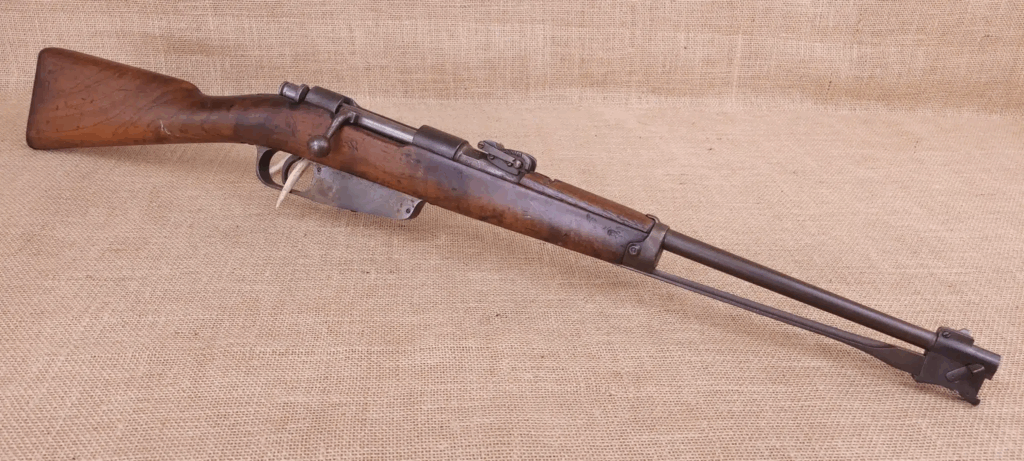
Italy’s Carcano M91 rifle was first introduced in 1891 and used throughout both world wars. It featured a six-round clip-fed system and a unique gain-twist rifling that improved accuracy. While it may not have been as refined as other rifles, it became an important part of Italian military history. Collectors appreciate its distinctive design and connection to key historical moments. Depending on rarity and markings, it can sell for $600 to $1,200.
Though sometimes overlooked, the Carcano’s significance lies in its long service record and accessibility to collectors. Certain variants, such as the Model 38 used by snipers, are harder to find. It gained additional notoriety in American history as the rifle connected to the assassination of President John F. Kennedy, further adding to its intrigue. For collectors of European rifles, the Carcano remains a fascinating piece. Its affordability and unique construction keep interest alive today.
Arisaka Type 99
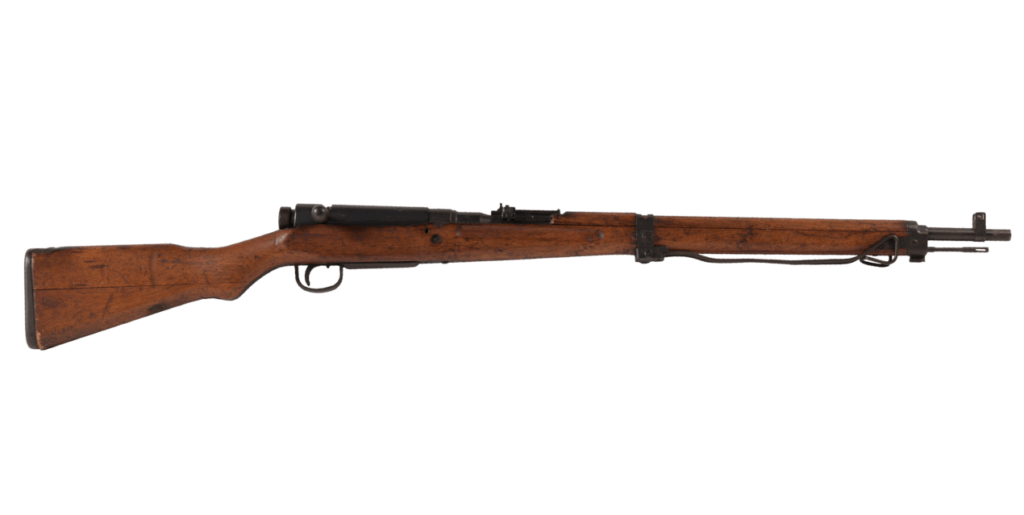
The Arisaka Type 99 was introduced in 1939 and used by Imperial Japanese forces throughout World War II. Known for its durability and powerful 7.7x58mm cartridge, it held up well in the harsh Pacific environment. Many rifles originally featured an imperial chrysanthemum stamp, which indicated ownership by the emperor. These rifles are now highly collectible, especially if the crest remains intact. Current market values generally range from $700 to $1,800.
Collectors often look for rifles with matching parts and original slings, as these increase authenticity. The Arisaka’s history and symbolism give it great appeal among WWII enthusiasts. Many examples were brought back to the United States as war trophies, further increasing their collectibility. Finding one with an untouched chrysanthemum mark is considered a special find. It remains a prized relic of Japanese military history.
Gewehr 98
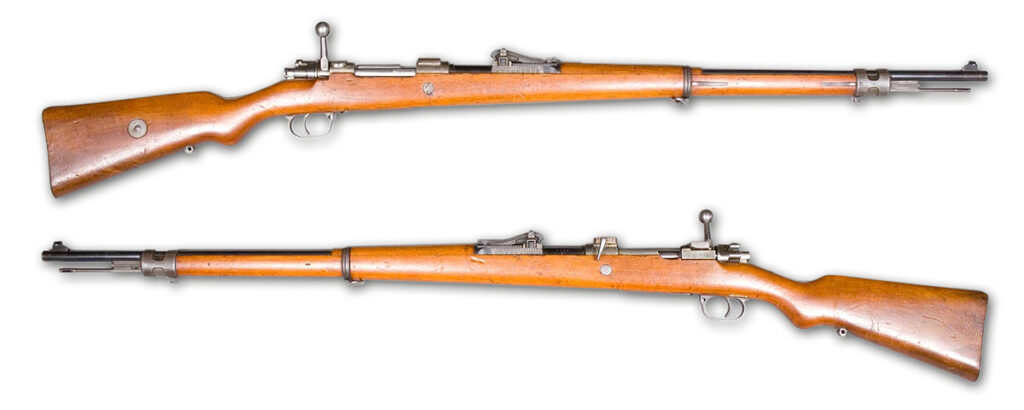
The Gewehr 98 was introduced in 1898 and became the standard rifle of German forces during World War I. It laid the foundation for later Mauser designs, including the famous Kar98k. The rifle’s long barrel and bolt-action system provided excellent accuracy and power at range. Collectors view it as one of the most important rifles in military firearm history. Depending on model and markings, it can sell for $1,000 to $2,000.
The Gewehr 98’s influence on modern bolt-action rifles cannot be overstated. Many models still retain their original wooden stocks and military engravings, which are key factors in collector value. Original WWI-dated rifles are harder to find but remain highly desirable. Because it served through major global conflicts, it carries immense historical weight. Collectors who appreciate early German engineering hold it in high regard.
M1 Carbine
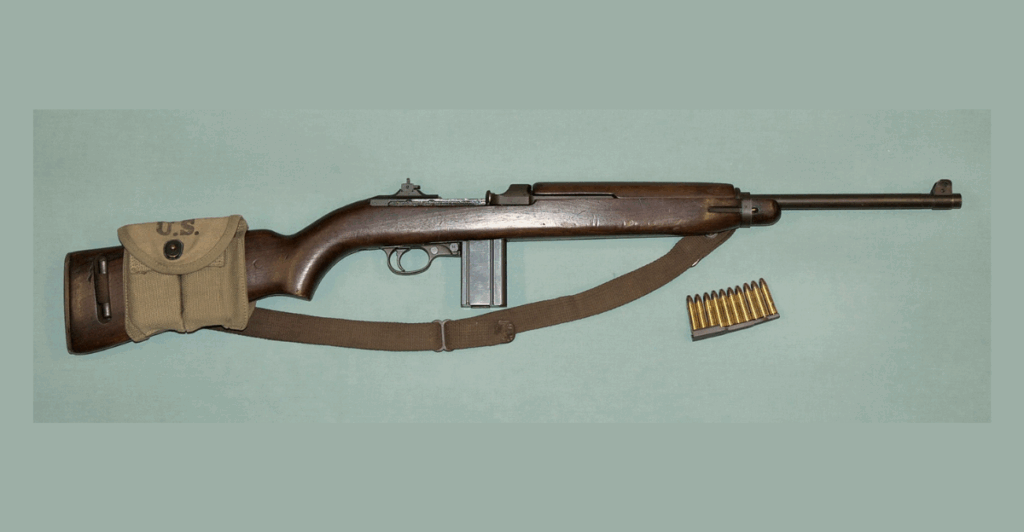
The M1 Carbine, introduced in 1941, became a lightweight alternative to the heavier M1 Garand for American troops. Compact and easy to handle, it was favored by paratroopers and officers. Its semi-automatic action made it faster and more convenient than most bolt-action rifles of the time. Collectors value its design and widespread use across multiple theaters of war. Depending on make and condition, prices range from $1,000 to $2,500.
What makes the M1 Carbine stand out is its balance between performance and portability. It was ideal for close combat and support roles, offering quick firing capability in tight spaces. Original versions made by Winchester or Inland Division are highly sought after. Many remain operational today, a testament to their quality construction. For collectors, owning one is like holding a piece of American ingenuity from the wartime era.
French Lebel Model 1886
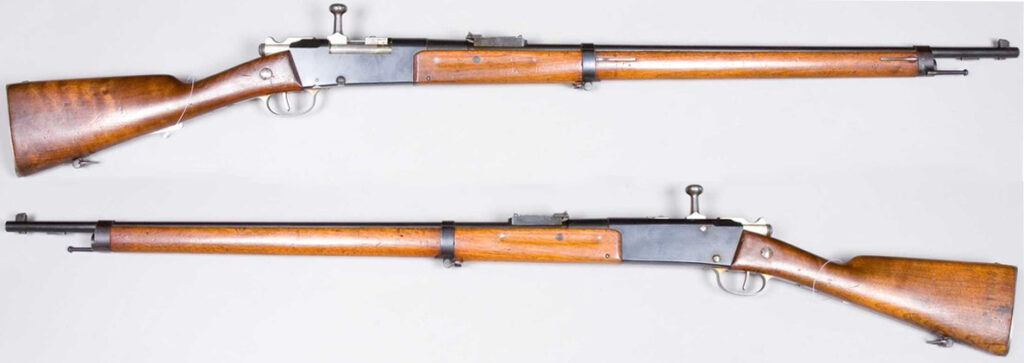
The Lebel Model 1886 was revolutionary when introduced as the world’s first rifle to use smokeless powder cartridges. It served France through World War I and into World War II, admired for its accuracy and advanced design for its era. Although it became somewhat outdated by the second war, it remains an important milestone in military technology. Collectors seek it for its pioneering role and limited surviving examples. Current prices range from $900 to $1,800.
The Lebel’s tube-fed magazine and unique cartridge gave it a distinctive look and feel. Many surviving rifles bear markings from specific French arsenals, making each piece historically significant. Because it bridged the gap between 19th and 20th-century firearm design, collectors view it as a transitional masterpiece. While hard to find, those that appear at auctions attract strong interest. It continues to fascinate enthusiasts who study the progression of early modern rifles.
Tokarev SVT-40
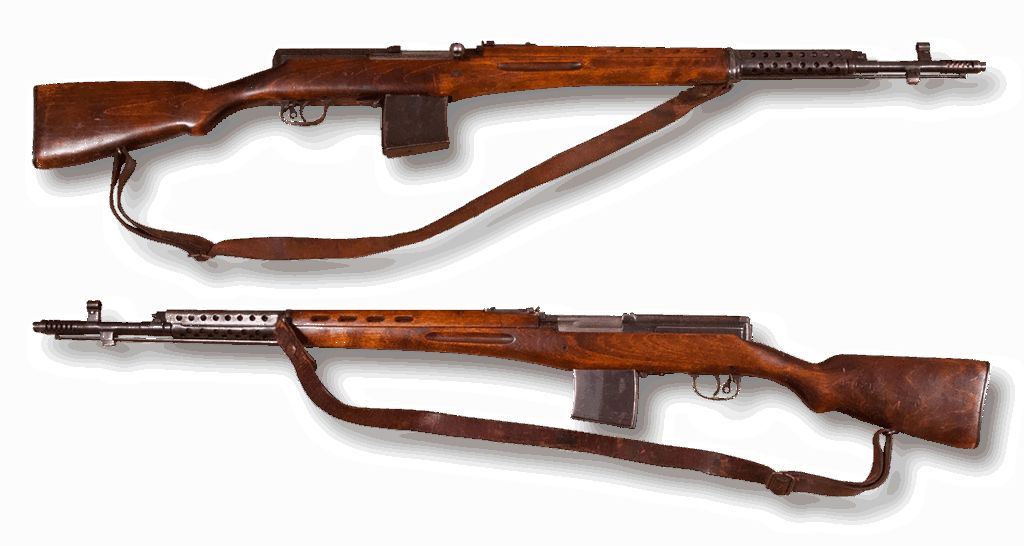
The Tokarev SVT-40 was introduced in 1940 as a semi-automatic rifle used by Soviet troops. It offered improved firepower compared to the older Mosin-Nagant, though it was more complex to maintain. Soviet snipers and officers favored it for its power and quick follow-up shots. Its limited production makes it a rare and valued collector’s item today. Prices typically range from $2,000 to $4,000, depending on markings and originality.
The SVT-40 represents the Soviet Union’s effort to modernize its infantry weaponry during the war. Collectors prize rifles with original sniper scopes or intact wartime stamps. While some were captured and modified by German forces, the authentic Soviet versions are the most desirable. Few remain in circulation, adding to their exclusivity. For serious collectors, it’s considered one of the crown jewels of WWII-era firearms.
Johnson M1941 Rifle

The Johnson M1941 rifle, introduced just before World War II, was designed by American inventor Melvin Johnson. Though it never fully replaced the M1 Garand, it gained a following among Marine paratroopers. Its recoil-operated system and detachable magazine made it unique for its time. Because of its limited production, it’s a prized find for collectors of U.S. military rifles. Depending on condition, its market value ranges between $4,000 and $7,000.
The rarity of the Johnson M1941 is what makes it so collectible today. Its unconventional design and mechanical innovation appeal to enthusiasts who admire early semi-automatic rifles. Surviving examples are often preserved in excellent condition due to limited field use. It’s one of the few American WWII rifles that remain scarce, driving collector interest. For many, owning a Johnson rifle is a highlight of their collection.
Arisaka Type 38
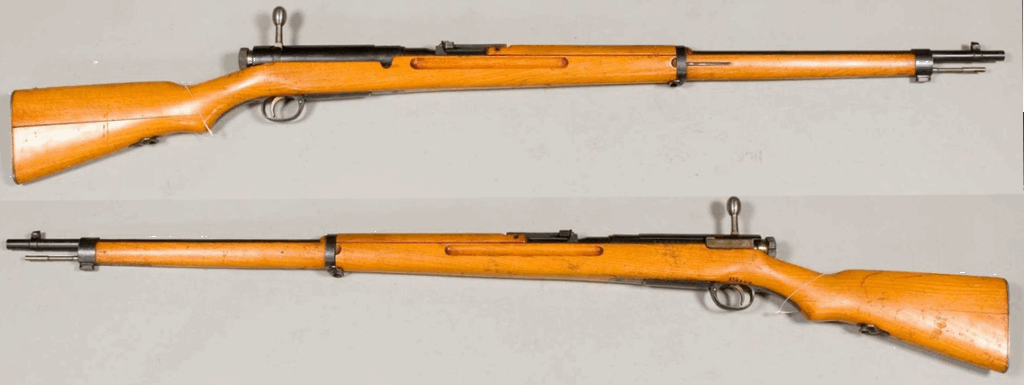
The Arisaka Type 38, introduced in 1905, was Japan’s standard infantry rifle during World War I and early in World War II. It used the 6.5x50mm cartridge and was renowned for its long range and accuracy. The rifle’s sturdy construction allowed it to handle rough combat environments without failure. Collectors value it for its craftsmanship and the cultural symbolism behind the chrysanthemum crest. Market prices range from $700 to $1,500, depending on markings and condition.
Type 38 rifles with original bayonets and matching serial numbers are particularly desirable. Many were brought home as war trophies by American soldiers after the Pacific campaigns. The rifle’s blend of reliability and historical importance keeps it in demand. Finding one with an unground imperial mark makes it especially valuable. Collectors appreciate its connection to early Japanese military heritage and its long record of service.
This article originally appeared on Avocadu.
